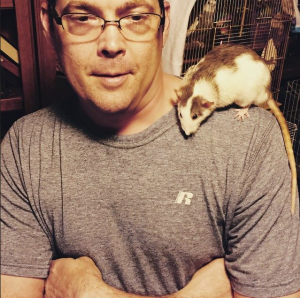 German roaches, Blattella germanica, are nasty little pests that are typically brought in to the home, workplace, restaurant, food processing plant, etceteras, by ‘hitchhiking,’ meaning that they are transported from one location to another by accidental human transportation. They are typically, as adults, a touch over half an inch long are tan to dark brown in color with two longitudinal, roughly parallel, black stripes on their pronotum (shield like area behind the head). These roaches have a practically world wide distribution thanks to their hitchhiking ways.
German roaches, Blattella germanica, are nasty little pests that are typically brought in to the home, workplace, restaurant, food processing plant, etceteras, by ‘hitchhiking,’ meaning that they are transported from one location to another by accidental human transportation. They are typically, as adults, a touch over half an inch long are tan to dark brown in color with two longitudinal, roughly parallel, black stripes on their pronotum (shield like area behind the head). These roaches have a practically world wide distribution thanks to their hitchhiking ways.
Blattella germanica are omnivorous meaning they will eat just about anything including each other. In the home they are typically associated with the kitchen and bathroom areas because of these areas provide a water source. However, in severe infestations, they can be found throughout the home.
The german roach has the fastest reproductive cycle in any peridomestic roach species. They go from egg to reproductive adult in about 124 days. The german roach female, once fertilized, develops an egg capsule, or ootheca, at the tip of her abdomen which she carries until roughly 24 hours before hatching occurs. The small black nymphs which hatch out will go through 7 instars (periods between molts) which means they shed their exoskeleton 8 times before reaching adulthood.
Roaches do not have colonies but they are a social roach. They leave frass in safe areas creating fecal focal points which a) let other roaches know that a particular location is safe to congregate in and b) provide a food source for young nymphs. They are thigmotactic which means that they feel safest in tight confined spaces like cracks and crevices in your kitchen cabinets.
Further reading can be found at the source of all knowledge: Wikipedia. en.wikipedia.org/wiki/German_cockroach or my blog, Adventures In Exterminating.
Now, dear reader, you may ask: How do you eliminate these vermin? Well, what follows is how I go about treating them. Some situations are different, such as in schools, daycares, senior living facilities, food processing plants, and hospitals, but for the purposes of this article I will focus on the home.
1) If situation is severe I like to take a hepa vac and vacuum up as many roaches as possible removing as much of the population as I can and disposing of them elsewhere.
2) I like to use a flushing/knockdown agent to further reduce the population from behind refrigerator, under stove, around dishwasher, inside can openers, behind medicine cabinets, cracks and crevices in furniture, around light fixtures, around door hinges, counter lips, baseboards (yes they do actually hide there), molding, door trim, inside window blind mechanisms, sometimes from shower and curtain rods…anywhere I see evidence of roaches.
3) Bait cracks and crevices throughout the home including in any infested piece of furniture in which I find them.
4) Spot treat corners, baseboards, around bases of counters, behind refrigerator, etc. with a non-repellant and insect growth regulator.
5) Place pre-baited roach bait stations in ares where in is not feasible to bait such as on backs of TV’s, computer towers, computer monitors, in dresser

When not using one of his MANY certifications. Jeremy Miller does what any guy does…waits for the women who are shopping
drawers, and the like.
Then, again depending on the severity of infestation, perform a follow up service in two weeks to a month. Sometimes this involves all five steps and sometimes it involves going through with a different bait gel and rebating.
The biggest key to eliminating German roaches is sanitation. Keep cabinets, stove, counter tops clean and grease free and moisture to a minimum.
Jeremy Miller, A.C.E—Got his start in the pest control industry in 2001 and have grown to be fascinated by my insects in general, but especially ants. Associate Certified Entomologist/Certified Trainer/Certified HPC & WDO Operator in GA & SC and certified mosquito control applicator · 2012 to present.




